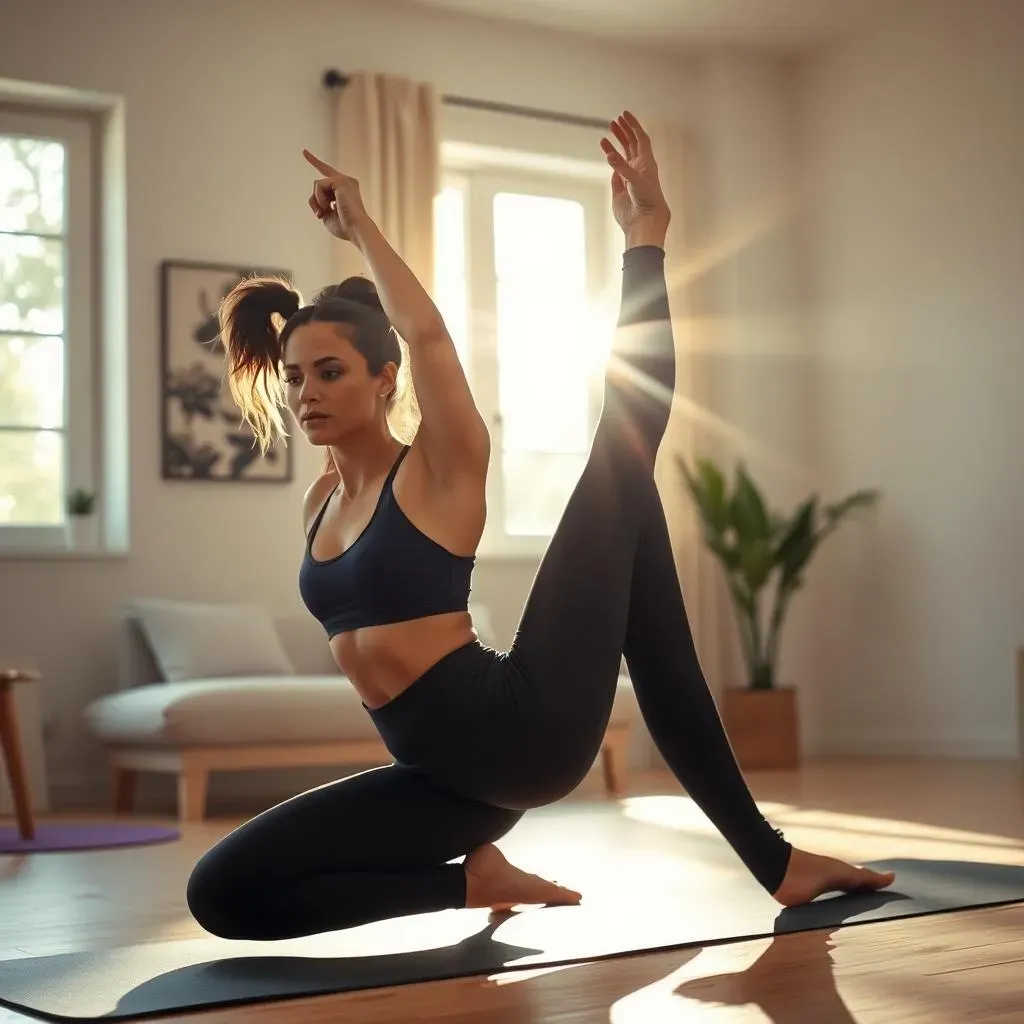Table of Contents
Maybe you're tired of the same old workout routine. Or perhaps you're short on time but still want something that burns calories *and* builds serious core strength. Hitting the gym feels like a logistical nightmare, and traditional Pilates studios can be pricey. Let's face it, finding a workout that ticks all the boxes, especially one you can actually do consistently without leaving your living room, feels like searching for a unicorn.
What's the Deal with HIIT Pilates at Home?
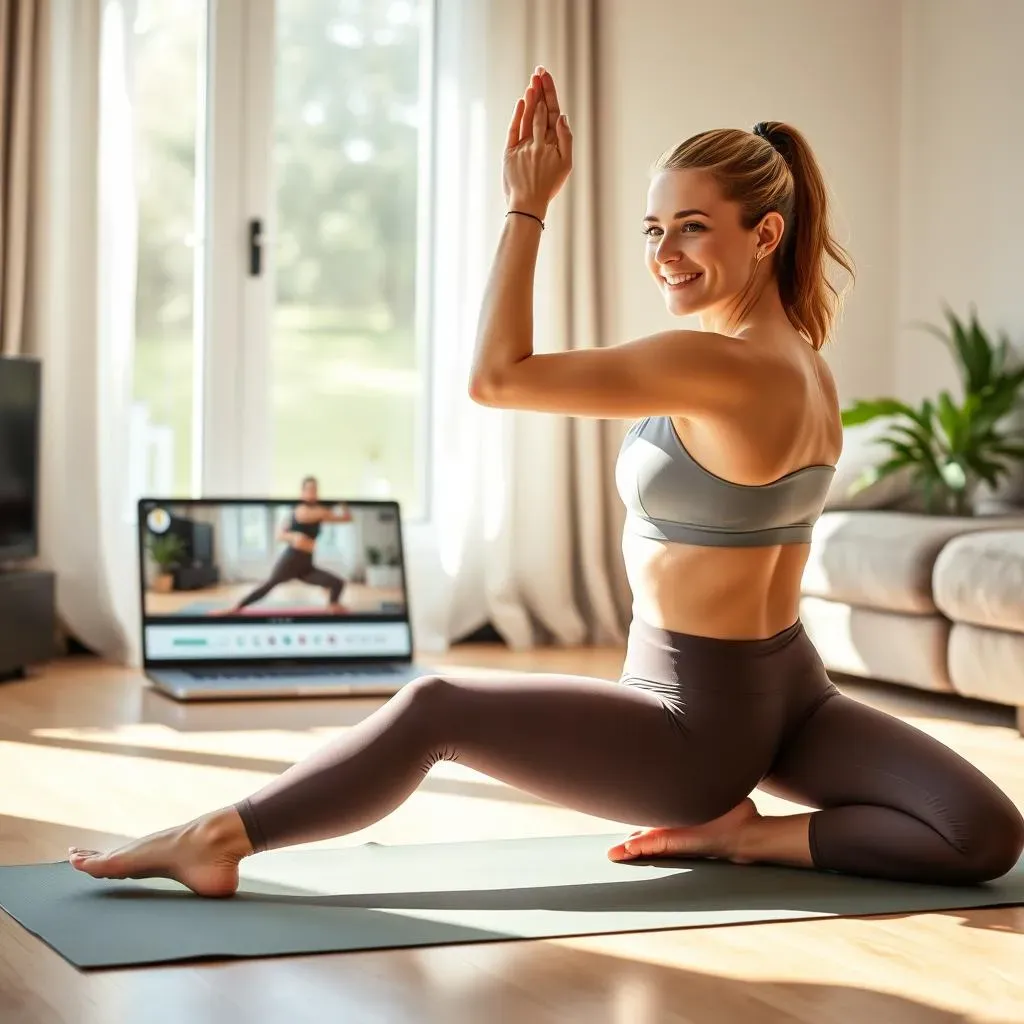
What's the Deal with HIIT Pilates at Home?
Mixing High Energy with Mindful Movement
so you've heard of HIIT, right? Short bursts of intense exercise, followed by quick recovery periods. Gets the heart rate way up, burns a ton of calories in a short time. Think burpees, jump squats, maybe some mountain climbers. Then there's Pilates – controlled movements, focused breathing, building core strength, flexibility, and posture. Think hundreds, roll-ups, leg circles. Now, mash 'em together, and you get this thing called HIIT Pilates. It's taking the explosive, calorie-torching nature of HIIT and blending it with the core-strengthening, precise movements of Pilates. The idea isn't to make Pilates into just another cardio class, but to integrate those core principles into a faster-paced format.
Why Take This Fusion Home?
Doing a **hiit pilates workout at home** just makes sense for a lot of people these days. Life's busy. Getting to a studio or gym can eat up serious time commuting, parking, and changing. Plus, studio classes aren't exactly cheap. With a home setup, you roll out of bed, throw on some workout clothes, and you're there. No excuses about weather or traffic. You can find tons of videos online, from quick 15-minute blasts to longer sessions, catering to different levels. It puts the workout on your schedule, not the other way around. It's about making fitness accessible and fitting it into the cracks of a packed day.
- No commute time
- Workout on your own schedule
- Potentially lower cost than studio classes
- Privacy to flail dramatically (not recommended, but possible)
More Than Just a Trendy Mashup
Look, it's easy to dismiss fusion workouts as just marketing hype. But a well-designed **hiit pilates workout at home** can actually deliver some solid results. You get the cardiovascular benefits and calorie burn from the HIIT intervals. You also build that deep core strength and improve flexibility from the Pilates elements. This isn't just about looking good; a strong core supports everything you do, from lifting groceries to preventing back pain. It’s a different kind of challenge than traditional workouts, pushing both your endurance and your control. It’s not necessarily easier, just different, and for some, that difference is exactly what they need to stay motivated.
Fusing Fire and Core: How a HIIT Pilates Workout at Home Gets Results
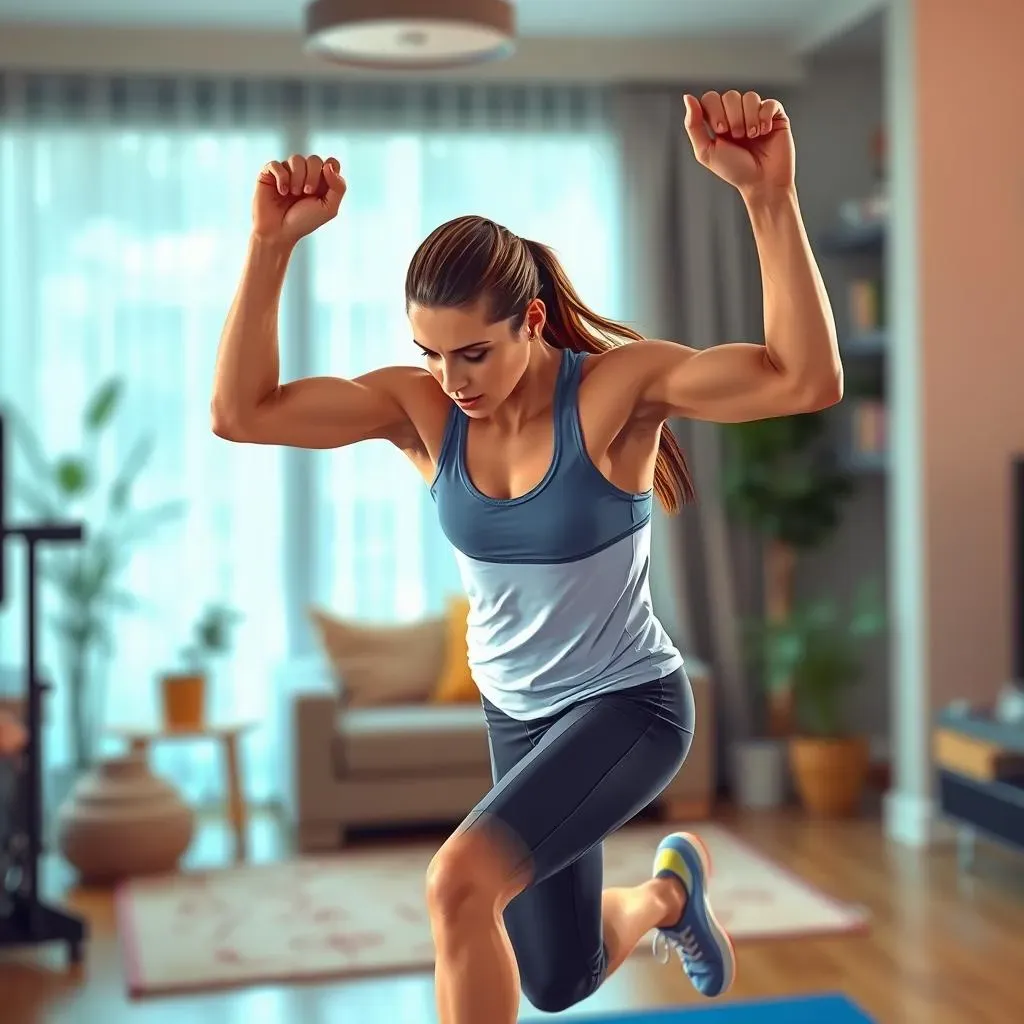
Fusing Fire and Core: How a HIIT Pilates Workout at Home Gets Results
The Science Behind the Sweat and Shake
Alright, so how does slapping these two seemingly opposite workout styles together actually work? Think of it like this: you hit a HIIT burst – burpees, high knees, whatever gets your heart rate spiking. Your body flips into that anaerobic zone, burning serious calories fast. Then, you transition into a controlled Pilates move – maybe a plank variation or a single-leg stretch. This shifts the focus. Instead of just gasping for air, you're now engaging those deep stabilizing muscles, the ones Pilates is famous for targeting. You maintain core control, focus on alignment, and breathe deliberately while your heart is still trying to calm down from the HIIT round. It’s a one-two punch: high-octane cardio followed by precise strength and control work. It forces your body to adapt quickly, hitting both your cardiovascular system and your muscular endurance in rapid succession.
Burning Bright and Building Steel
Look, the promise of burning a ton of calories in a short time is what draws many people to HIIT. Add Pilates to the mix, and you're not just burning calories; you're building a stronger, more stable foundation. Those quick HIIT intervals torch energy, and the Pilates elements ensure you're not just flailing around. You're building actual functional strength, particularly in the core, glutes, and hips. This combination means you get the metabolic boost from the intensity *and* the long-term benefits of improved posture, balance, and muscular control. It’s more efficient than doing them separately if your goal is a blend of both cardio fitness and core strength. Plus, doing this **hiit pilates workout at home** means you can squeeze it in whenever you have a pocket of time, maximizing consistency.
What kind of results are we talking about?
- Increased cardiovascular fitness.
- Higher calorie burn during and after the workout (that lovely EPOC effect).
- Significantly improved core strength and stability.
- Better body control and awareness.
- Potential for improved posture and reduced back pain.
Why It Feels Different (And Why That's Good)
Trying a **hiit pilates workout at home** for the first time can feel... odd. You're out of breath from the jumping jacks, and suddenly you're trying to hold a perfect hundreds position. It requires a different kind of focus than just slogging through traditional cardio or flowing through a pure Pilates class. You have to switch gears mentally and physically very quickly. This constant shift challenges your muscles and your mind in ways a single-discipline workout might not. It keeps things from getting boring, for starters. And that mental engagement, that need to stay present and controlled even when your body is screaming, builds serious discipline. It's not just about the physical outcome; it's about training your ability to perform under fatigue while maintaining form. That translates to better performance in daily life, whether you're chasing a bus or just standing up straight.
Your First HIIT Pilates Workout at Home: Moves and Method
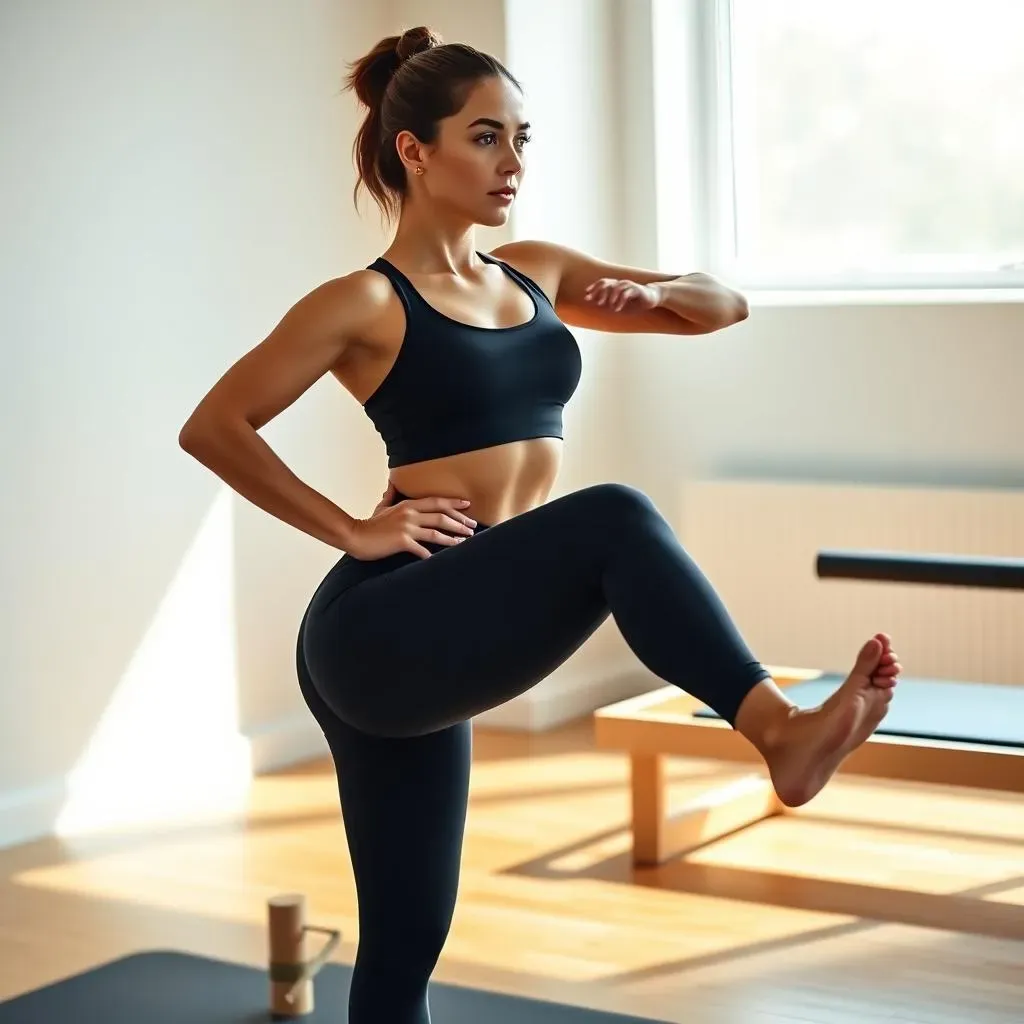
Your First HIIT Pilates Workout at Home: Moves and Method
Starting Simple: Don't Go Zero to Sixty
you're ready to try this mix. Don't picture yourself instantly doing jump lunges into a perfect, sustained side plank. That's a recipe for pulled muscles and giving up before you start. Your first **hiit pilates workout at home** should be about dipping your toes in. Familiarize yourself with the basic Pilates principles: core engagement, controlled movement, proper breathing. Then, pair those with foundational HIIT moves that don't require advanced coordination. Think high knees, jumping jacks, mountain climbers, but maybe start with lower impact versions like marching in place or stepping instead of jumping. The goal is to get the heart rate up safely, then bring it back down while focusing on form during the Pilates segments. Nobody's judging your shaky hundred in your living room.
Building Your First Routine: A Simple Structure
A basic structure for your first **hiit pilates workout at home** might look like this: a short warm-up (marching, arm circles), then alternate between a HIIT interval (30 seconds intense effort) and a Pilates move (30-60 seconds focused control). Repeat this pairing for a set number of rounds, then move to a different HIIT/Pilates combo. Finish with a cool-down stretch. Keep the moves simple initially. For HIIT, maybe high knees. For Pilates, try the Hundred or a simple bridge. As you get comfortable, you can swap in more challenging exercises. The key is consistency and building up gradually. Trying to crush a 45-minute advanced routine on day one is just asking for soreness and discouragement.
Here’s a simple structure to get you started:
- Warm-up: 3-5 minutes (light cardio, dynamic stretches)
- Round 1: High Knees (30 seconds)
- Round 1: The Hundred (30-60 seconds)
- Repeat Round 1: 2-3 times
- Round 2: Mountain Climbers (30 seconds)
- Round 2: Plank (30-60 seconds)
- Repeat Round 2: 2-3 times
- Cool-down: 3-5 minutes (static stretches)
Picking Your Moves: Fusion Examples
So, what specific moves work well together in a **hiit pilates workout at home**? You want exercises that complement each other. A burpee (HIIT) followed by a plank hold (Pilates) is a classic pairing – you get the explosive full-body effort, then transition to controlled core stability. Jumping jacks (HIIT) can lead into leg circles (Pilates), working cardio then focused hip and core control. Even simple squats (can be HIIT or strength) can be followed by a spine stretch forward (Pilates) to work flexibility and spinal articulation. The options open up as you learn more moves, but start with basics you know or can easily look up. Focus on performing each move with intention, whether it's max effort for HIIT or precise control for Pilates. Don't just go through the motions.
Making Your AtHome HIIT Pilates Workout Actually Work: Tips & Tricks
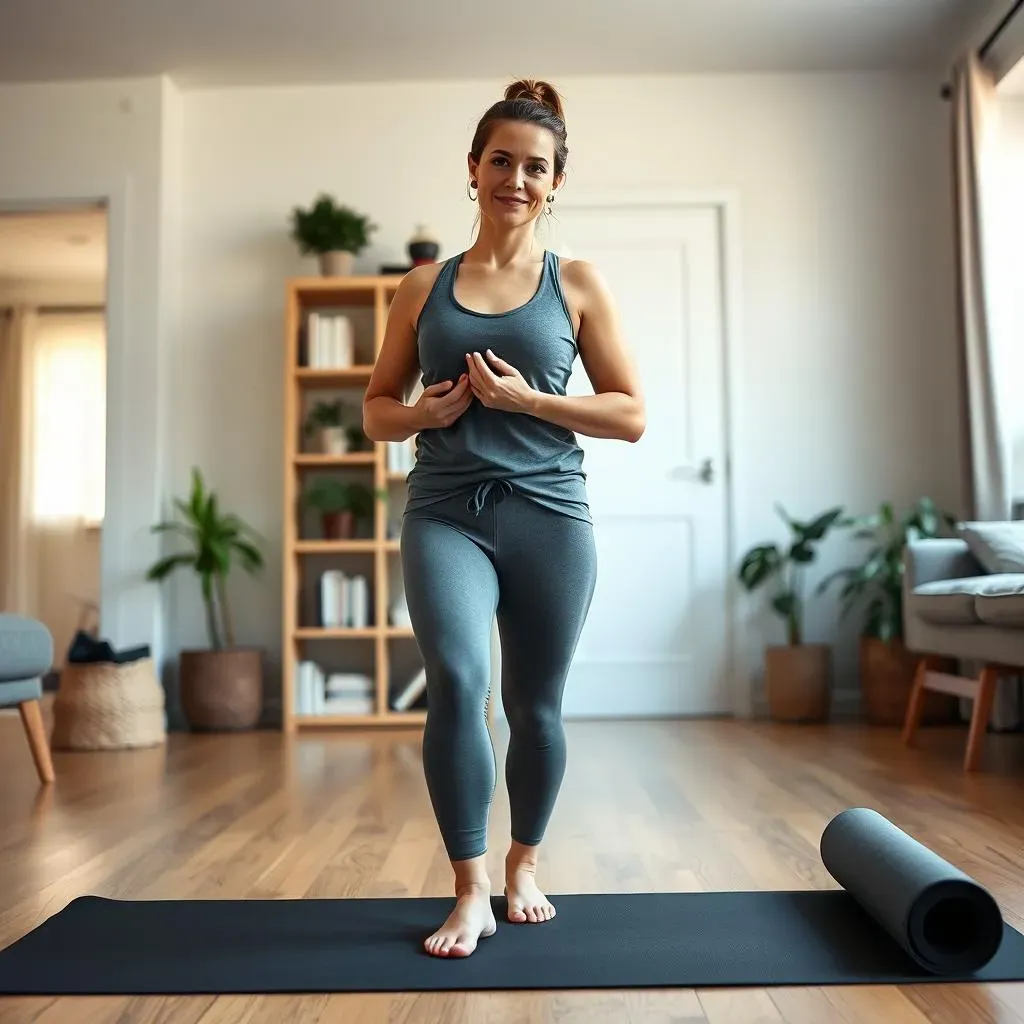
Making Your AtHome HIIT Pilates Workout Actually Work: Tips & Tricks
Setting the Stage for Sweat and Control
so you've decided to actually *do* that **hiit pilates workout at home**. Great. Now, how do you make sure it doesn't just devolve into a messy, ineffective flail session? First things first: your space. You don't need a dedicated home gym, but you do need enough room to extend your arms and legs without knocking over lamps or headbutting furniture. Clear a spot. Roll out a mat – a good mat makes a world of difference, trust me. Trying to do planks on a slippery rug or hard floor is just asking for trouble. And maybe the biggest one? Kill the distractions. Put your phone on silent, tell anyone else in your space you need X minutes uninterrupted. Treat it like a real class, even if your instructor is a pixelated person on a screen.
Think about it: you wouldn't scroll through Instagram mid-burpee in a studio class (or at least, I hope you wouldn't). Your living room is your studio now. Make the space work *for* your workout, not against it. Good lighting helps, too; nobody wants to accidentally kick a wall because they couldn't see it coming.
Essential Home Workout Setup Checklist:
- Enough clear floor space
- A supportive exercise mat
- Water bottle within reach
- Minimal distractions (phone on silent!)
- Comfortable workout clothes
Mastering the Moves, Not Just Rushing Through Them
It's easy to get caught up in the "HIIT" part and forget the "Pilates." The point isn't just speed; it's speed *with* control. During those Pilates segments, slow down. Focus on engaging your core, pulling your navel towards your spine, and moving with intention. Are your hips staying level during that single-leg stretch? Is your spine articulating during the roll-up, or are you just flopping up and down? Don't sacrifice form for reps, especially when you're starting. Bad form doesn't just make the exercise less effective; it's how you get injured doing something that's supposed to be good for you. Listen to your body. If something feels sharp or wrong, back off or modify the move. There's no medal for pushing through pain that isn't just muscle fatigue.
Making this a regular thing is where the real magic happens. A one-off session is fine, but consistency builds results. Try to schedule it in. Even 15-20 minutes done regularly is better than an hour done sporadically. Your body adapts, the moves get easier, and you'll start to feel that core strength kick in outside of the workout.
Ever heard the saying, "Consistency is more important than intensity"? For a **hiit pilates workout at home**, it absolutely holds true.
Gear and Guidance: What You Actually Need
One of the best things about a **hiit pilates workout at home** is how little gear you actually need. A mat is pretty non-negotiable for comfort and support. Beyond that, your body weight is your primary tool. Some workouts might use small props like resistance bands, a small Pilates ball, or light dumbbells, but you can usually find modifications that don't require them, especially when you're starting. Don't feel like you need to buy a whole equipment store. Start simple. See if you even like this style of workout before investing in extras.
Finding good instructors online is key. Not all free videos are created equal. Look for instructors who emphasize form cues, offer modifications, and structure the workout logically. Some platforms specialize in this fusion, while others offer individual classes you can mix and match. Read reviews, try a few different ones, and find someone whose style resonates with you. A good guide makes the difference between a frustrating session and an effective one.
Ready to find a great online class? Search platforms like YouTube, fitness apps, or dedicated online studios for "HIIT Pilates fusion" or "at home Pilates cardio."
So, Is a HIIT Pilates Workout at Home Worth It?
Look, no single workout is a magic bullet. A hiit pilates workout at home isn't going to instantly give you a six-pack while you binge-watch TV. What it *is* is a tool. It's a way to cram some serious work into a short timeframe, hitting both cardio and core without needing a gym membership or fancy equipment. It takes effort, just like anything else that actually produces results. If you show up, pay attention to form (so you don't injure yourself doing burpees over your coffee table), and stick with it, you'll likely see changes. If you treat it like another item on your "maybe someday" list, well, don't expect miracles.
